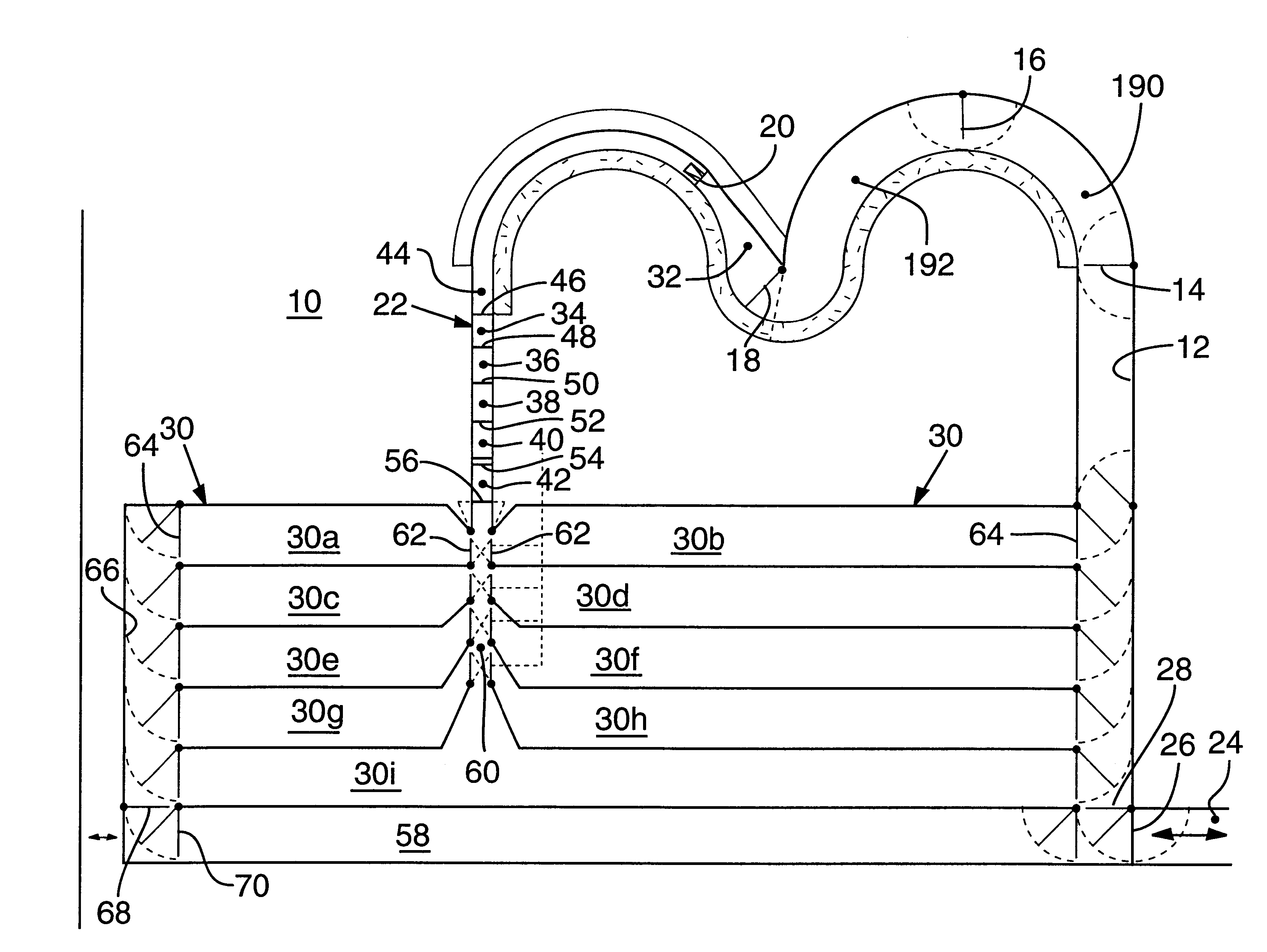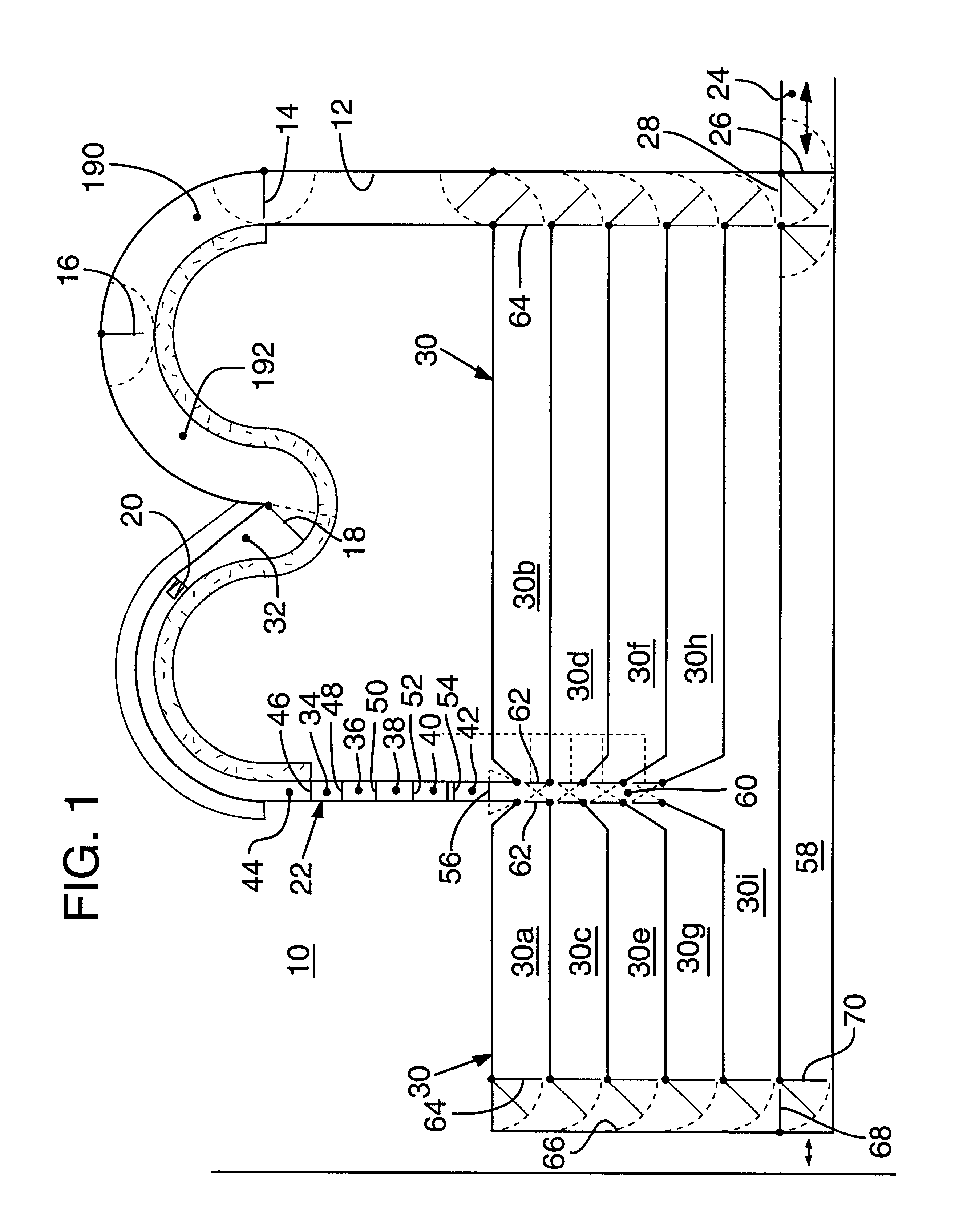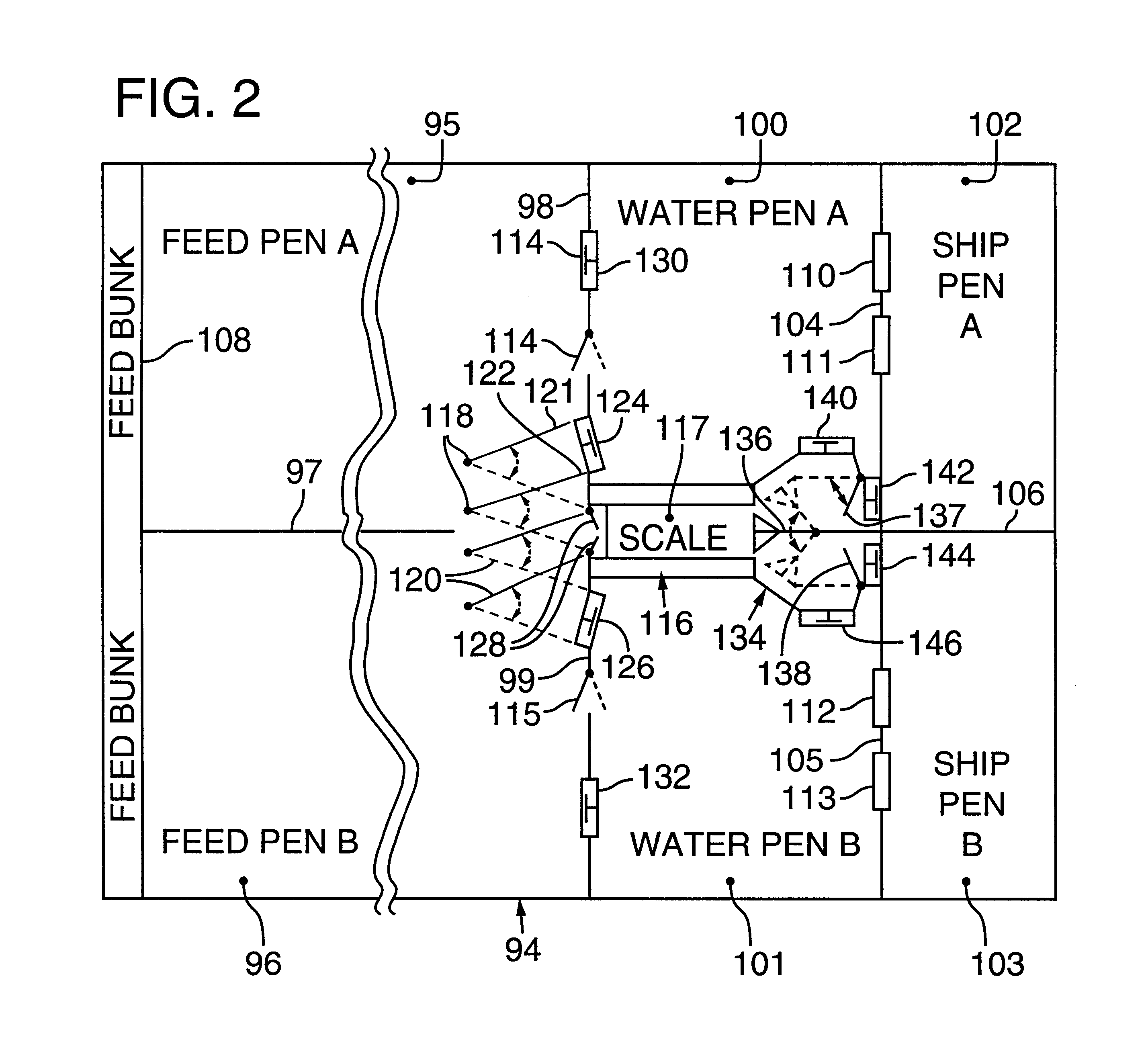Cattle management method and system
a management method and system technology, applied in the field of cattle management methods and systems, can solve the problems of not being able to achieve the effect of ensuring the welfare of animals in a large feedlot, being difficult to achieve, and being difficult to achiev
- Summary
- Abstract
- Description
- Claims
- Application Information
AI Technical Summary
Benefits of technology
Problems solved by technology
Method used
Image
Examples
Embodiment Construction
Individual Animal Final DTF Calculation
1) Input: Sex, Beginning Weight, OFW, Mature Weight, Breed, Hide, Age, Number of Head, Purchase Date, Hip Height, Calculated Frame Score, Initial Back Fat, Flesh Condition Code, Ration Composition / Energy, Environmental Factors.
2) Run Cornell Calculation Method One.fwdarw.Outputs for 6 periods on feed.
Average Weight for Period.
Dry Matter Intake for Period.
ADG for Period
DOF for Period
3) Calculation Gain for Period=ADG-DOF Period.
4) Period Feed Cost of Gain=DMI.times.DOF Period.times.Cost Per Pound+(Yardage cost per day.times.DOF Period.div.Gain for Period)
5) Feed Interest Cost of Gain=Calculated for all except period one
6) Cattle Interest Cost of Gain for Period I=Daily interest rate.times.number of days in period=$.sub.13.div.the gain (calculated by average weight for period less initial weight)
7) Total nos. 4)+5)+6)=Total incremental Cost of Gain
8) Calculate and project for all 6 periods and plot projection graph
9) Plot OFW (Mature Weight) on T...
PUM
 Login to View More
Login to View More Abstract
Description
Claims
Application Information
 Login to View More
Login to View More - R&D
- Intellectual Property
- Life Sciences
- Materials
- Tech Scout
- Unparalleled Data Quality
- Higher Quality Content
- 60% Fewer Hallucinations
Browse by: Latest US Patents, China's latest patents, Technical Efficacy Thesaurus, Application Domain, Technology Topic, Popular Technical Reports.
© 2025 PatSnap. All rights reserved.Legal|Privacy policy|Modern Slavery Act Transparency Statement|Sitemap|About US| Contact US: help@patsnap.com



